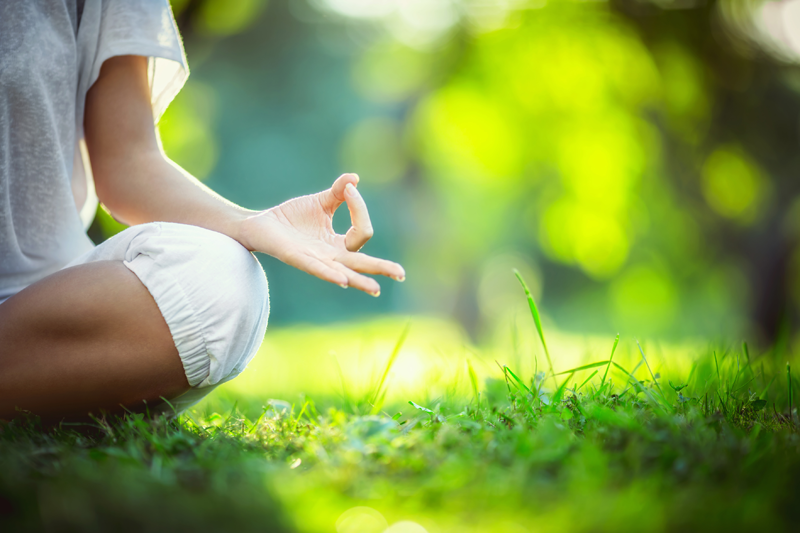We all know that yoga can better our health. It can relieve various aches and pains and better our emotional health. But did you know that it can also help addiction recovery? Interestingly, many patients are now hitting the yoga mat as part of their treatment plan. In this article, we explore 5 amazing ways yoga can help addiction recovery.
1. Helps Deal with Negative Emotions
One of the main reasons for relapse is stress and feelings which are difficult to cope with. Many addicts find that depression and anxiety are key factors that push them towards abusing alcohol and drugs. To combat this, you need to minimise negative feelings such as stress, anger, anxiety and depression. By practising yoga poses and breathing techniques, many people can accept these difficult emotions and push them away.
2. Reduces Cravings
You may have heard people using yoga to quit smoking. Well, the same approach can be used to quit other substances including drugs, alcohol and even caffeine or sugar. Staying in the present makes us realise that it’s natural to crave highs. Yoga can help us to replace artificial highs, such as drugs and alcohol, with natural highs, such as meditation and breathing. There are even postures which are aimed at reducing cravings.
3. Helps Detoxification
Many yoga poses use gravity to increase blood flow to certain areas of the body. A prime example of this is Downward Dog. By practising these asanas, you are activating the organs that help with detox. Poses such as Triangle and Bridge aid digestion, making detox easier. Just as certain postures help to reduce cravings, others target detoxification.
4. Acts as Physical Exercise
Physical exercise is one of the most recommended practices for addiction recovery. Exercise reduces stress, increases self-confidence, helps you to sleep better, and makes you feel great. When you’re detoxing, sleep can be one of the hardest things to do. Thankfully, yoga is a form of physical exercise, so practising regularly can help you to get some shut-eye. Exercise can also aid recovery by keeping the mind occupied. If you’re focusing on something, you’re less likely to think about your next fix. Over time, yoga can be used to replace negative thoughts about having another drink, smoke, coffee or any other high.
5. Allows Quiet Introspection
One of the most important stages of recovery is moving on from the person you were and focusing on the person you are now. Yoga allows quiet introspection and gives you the headspace to focus on the new you. Often, addicts find themselves bogged down by the mistakes and unpleasant memories of their past. Being able to move on from these instead of dwelling on them is essential for addiction recovery. Getting a chance to reinvent yourself is rare, so take advantage of it and become the person you want to be.
Yoga Poses for Addiction Recovery
There are tons of yoga poses geared towards addiction recovery; however, the ones below are some of the most effective.
Childs Pose
Childs Pose relieves mental fatigue and encourages feelings of protection and safety. This is a popular pose for addiction recovery as it gives yogis the security they need to recover. To practice Childs Pose, begin on all fours. Bring your feet together and push your hips back to your heels. Your stomach should now be resting on your thighs, and you will be able to bring your forehead down toward the floor. Finally, stretch your arms out in front of you to feel a stretch up the length of the back. You are in Childs Pose.
Seated Forward Bend
Like Childs Pose, Seated Forward Bend also encourages feelings of safety and protection. The posture also aids detoxification, helping addicts to detox quicker. To practice the asana, begin seated with your legs together and your hands by your sides. Lift your chest and lower your upper body towards your legs. Engage your abdominals and imagine your stomach moving toward your thighs. You are in Seated Forward Bend. If you can’t bend all the way, don’t panic! As long as you feel a stretch through your upper and lower back, the asana is doing its job.
Corpse Pose
Corpse Pose is the basic asana of relaxation. It relieves the body of tension and relaxes, replenishes and rejuvenates the body and mind. To practice the asana, all you need to do is lie down on your back and relax your arms by your sides. Keep both legs stretched out throughout the pose. You are in Corpse Pose. Take this time to concentrate on your breathing for as long as you feel happy doing so. Focus on the present moment and use this time for quiet introspection. Instead of dwelling on unpleasant memories from the past, think about the new you and become the person you know you can be.
In Summary
So, there you have it – 5 amazing ways yoga can help addiction recovery. For many addicts, the first step to recovery is pushing negative emotions out of the mind. You can then take steps to fight off cravings and begin to detox your body. By turning yoga into regular activity and taking it seriously, you can start to detox and think about the person you want to become instead of dwelling on the person you once were. When you’re aware of the present, you’re able to enjoy life and find ways to manage negative emotions such as anger, depression and anxiety. While the emotions may still be there, yoga can help to deal with them in a healthy and rational way. You may find it helpful to keep your yoga bag packed and by the door. That way, you’re ready to head out whenever you need to.

